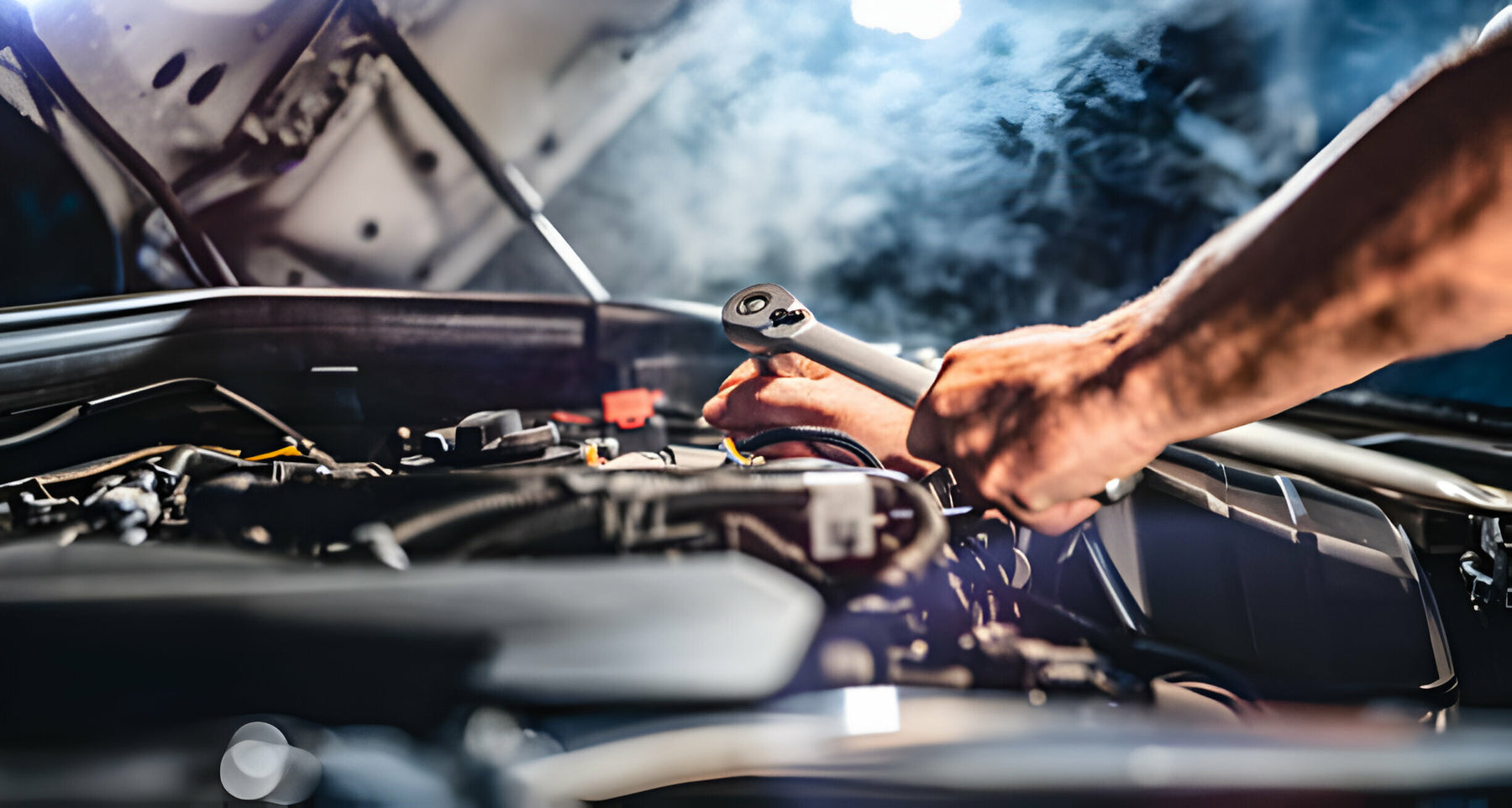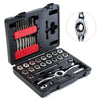
Essential Automotive Repair Do's and Don'ts
The automotive repair industry is as dynamic as it is intricate, with continuous advancements in technology and techniques shaping the way professionals approach vehicle maintenance and repair. As vehicles become increasingly sophisticated, the margin for error narrows, making it crucial for automotive repair professionals to stay abreast of best practices and common pitfalls. This comprehensive guide aims to distill years of industry knowledge into actionable insights, providing a roadmap for navigating the complex landscape of automotive repair. Whether you're a seasoned technician or new to the field, understanding these essential do's and don'ts will elevate your craft, ensuring that you deliver top-notch service while avoiding common mistakes that can compromise vehicle performance and safety.
Automotive repair is not just about fixing problems; it's about doing so efficiently, effectively, and safely. The difference between a job well done and a botched repair often lies in the details—attention to diagnostic procedures, adherence to manufacturer specifications, and the judicious use of tools and materials. This article delves into the nuances of automotive repair, offering a blend of technical advice, best practices, and professional wisdom. It serves as a beacon for those who take pride in their work and strive for excellence in every repair. Let's explore the critical do's and don'ts that every automotive repair professional should keep at the forefront of their practice.
1. Understanding the Importance of Diagnostics
Do: Invest Time in Comprehensive Diagnostics
- Conduct thorough diagnostics using advanced diagnostic tools.
- Interpret diagnostic codes accurately and understand their implications.
- Consider the vehicle's history and customer complaints during diagnostics.
Don't: Rush the Diagnostic Process
- Avoid skipping steps in the diagnostic procedure.
- Resist the temptation to make assumptions based on incomplete data.
- Don't ignore minor codes that could indicate larger issues.
Diagnostics are the cornerstone of effective automotive repair. A meticulous diagnostic process can differentiate between a precise repair and a misguided one. Investing time in comprehensive diagnostics not only aids in accurately identifying the problem but also in understanding the underlying issues that might not be immediately apparent. Advanced diagnostic tools and software are invaluable in this process, offering insights that go beyond surface-level symptoms. Conversely, rushing through diagnostics or making assumptions based on incomplete information can lead to overlooked issues, resulting in repeated repairs and dissatisfied customers.
2. Adhering to Manufacturer Specifications
Do: Follow OEM Specifications
- Use OEM (Original Equipment Manufacturer) parts when possible.
- Adhere to manufacturer-recommended repair procedures and guidelines.
- Consult the vehicle’s service manual for specific repair instructions.
Don't: Cut Corners with Aftermarket Parts
- Avoid using lower-quality aftermarket parts that may not meet OEM standards.
- Don't disregard manufacturer guidelines in favor of quicker or cheaper methods.
- Be wary of modifications that could void the vehicle's warranty.
Adhering to manufacturer specifications is not merely a recommendation; it's a requirement for quality repairs. Using OEM parts and following recommended procedures ensures that repairs meet the stringent standards set by the manufacturer. These specifications are designed to guarantee performance, safety, and longevity. While aftermarket parts can be tempting due to their lower cost, they may not always provide the same fit, function, or quality as OEM parts. Ignoring manufacturer guidelines can lead to subpar repairs, dissatisfied customers, and potentially voided warranties.
3. Prioritizing Safety
Do: Implement Safety Measures
- Use personal protective equipment (PPE) consistently.
- Follow safety protocols when using tools and equipment.
- Ensure a clean and organized workspace to prevent accidents.
Don't: Overlook Workplace Hazards
- Avoid becoming complacent about routine safety measures.
- Don't underestimate the risks associated with specific repairs.
- Never bypass safety features on tools and equipment for convenience.
Safety is paramount in the automotive repair industry. The nature of the work entails exposure to various hazards, including chemicals, heavy machinery, and electrical systems. Implementing rigorous safety measures not only protects technicians but also contributes to a professional and responsible workplace culture. Personal protective equipment, such as gloves, goggles, and respirators, should be used religiously. Additionally, maintaining a clean and organized workspace minimizes the risk of accidents, ensuring that repairs are conducted in a safe environment.
4. Emphasizing Quality Over Speed
Do: Focus on Quality Workmanship
- Take the necessary time to complete repairs with precision.
- Double-check your work to ensure no steps have been missed.
- Prioritize the quality of the repair over the speed of completion.
Don't: Sacrifice Quality for Quick Turnaround
- Avoid cutting corners to save time.
- Don't rush through repairs, risking mistakes and oversights.
- Resist pressure to complete jobs in unrealistically short timeframes.
In an industry where time is often equated with money, the pressure to complete repairs quickly can be intense. However, sacrificing quality for speed is a false economy. Rushed repairs are prone to errors, leading to callbacks, dissatisfied customers, and damage to your reputation. Quality workmanship, on the other hand, builds trust and loyalty, encouraging repeat business. Taking the necessary time to complete repairs properly and double-checking your work can save time and resources in the long run by reducing the likelihood of future issues.
5. Staying Informed About New Technologies
Do: Continuously Update Your Skills and Knowledge
- Participate in ongoing training and certification programs.
- Keep abreast of emerging automotive technologies and repair techniques.
- Subscribe to industry publications and attend relevant workshops and seminars.
Don't: Become Complacent with Current Knowledge
- Avoid the mindset that past experience alone is sufficient.
- Don't ignore advancements in automotive technology and repair methods.
- Resist the temptation to bypass new learning opportunities.
The automotive industry is in a constant state of evolution, with new technologies and repair methodologies emerging regularly. Staying informed and continuously updating your skills is crucial for remaining competitive and effective. This involves not just keeping up with the latest automotive technologies but also embracing new repair techniques and materials. Complacency can lead to outdated practices that may not be effective or safe with newer vehicle models. Engaging in ongoing education and training ensures that you are equipped to handle the challenges of modern automotive repair.
6. Utilizing High-Quality Tools and Equipment
Do: Invest in Professional-Grade Tools
- Choose tools and equipment that enhance efficiency and accuracy.
- Maintain and calibrate tools regularly to ensure optimal performance.
- Keep your toolkit updated with specialized tools for specific repairs.
Don't: Rely on Substandard Tools
- Avoid the temptation to use cheap or inappropriate tools for complex repairs.
- Don't neglect tool maintenance, risking inaccurate results.
- Resist the urge to make do with outdated or damaged equipment.
The quality of tools and equipment plays a significant role in the success of automotive repairs. Professional-grade tools not only improve the efficiency and accuracy of your work but also reflect your commitment to excellence. Regular maintenance and calibration of tools are essential for delivering precise repairs. On the other hand, relying on substandard tools can compromise the quality of your work and potentially damage the vehicle. Investing in high-quality tools is an investment in your professionalism and the satisfaction of your customers.
Related Article: Common Automotive Repair Problems
Driving Excellence: Mastering the Art of Automotive Repair
In the ever-evolving world of automotive repair, professionals are tasked with a significant responsibility: to maintain and restore vehicles in a way that ensures peak performance and safety. The outlined do's and don'ts serve as fundamental principles guiding technicians through the intricate process of automotive maintenance and repair. By emphasizing the importance of comprehensive diagnostics and strict adherence to manufacturer specifications, this guide underscores the critical nature of precision, patience, and professionalism in the field.
As technology continues to advance and vehicles become more complex, the role of the automotive repair professional becomes increasingly demanding. Yet, it is precisely this challenge that underscores the importance of continuous learning, adaptation, and adherence to best practices. By embracing these do's and don'ts, technicians can rise to meet the demands of modern automotive repair, delivering services that combine expertise, diligence, and a deep commitment to excellence.



